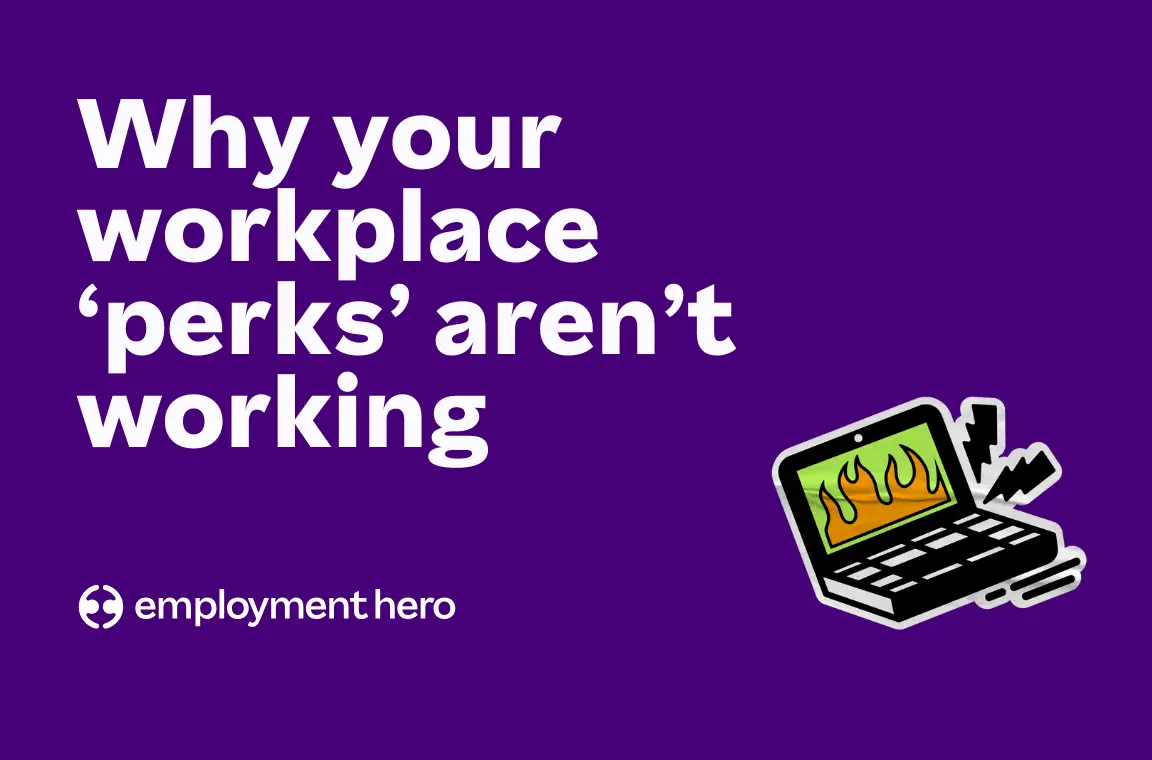How to implement OKRs in your company
Although it may seem daunting, the right planning can save you a lot of stress when rolling out a new initiative like this. Keep reading to find out how to implement OKRs in your organisation.

Now you know what OKRs are, why all the best companies are using them and how to create them – you’re ready for the next piece of the OKR framework puzzle. It’s time to secure senior buy-in from managers and leaders and then introduce and implement OKRs across the entire organisation.
Managers and team leaders play a huge role in ensuring the success of implementing OKRs, and it’s your job to support them. Any company that leads from the top will find manager buy-in extremely beneficial to the OKR roll-out process. And to be honest, your executive team should always lead by example.
Although it may seem daunting, the right planning can save you a lot of stress when rolling out a new OKR program.
If you need guidance on setting up your OKR framework, check out our OKRs guide: Objectives and key results explained.
Keep reading to see how you can best prepare your company for the OKR implementation process…
Let’s recap: Which companies are implementing OKRs effectively?

Today, many large companies implement OKRs to effectively manage their goals. Think Atlassian, Google, Netflix and Adobe. You can find out more about why the world’s leading companies use OKRs here.
For more specific strategies on rolling out OKRs, especially in a modern work environment, consider these strategies for implementing OKRs in hybrid work environments.
With numerous big companies experiencing success with OKR performance, how can you start implementing the OKR framework in your organisation?
Step 1: Securing buy-in from senior team members
The most powerful way to get someone to buy into something is to show them how it will make their day-to-day easier.
This is particularly the case for time-poor managers and team leaders. Especially when their day regularly encompasses putting out fires, managing people, and overseeing processes.
If you are trying to introduce OKRs to people who have never heard of them and are accustomed to the old way of doing things – you may need to help them see the big picture of implementing OKRs.
Explain what key results are and how OKRs can help
Start by having a conversation with other managers about how they think their team are contributing to the goals that your business currently has in place.
This will give you a solid starting point to find out how well these managers are tracking their teams’ progress and success, what methods they currently use and their tracking process.
You can then use this conversation as an opportunity to explain how OKRs naturally link teams’ efforts to top company goals, not only at the managers’ level but at every level in the organisation.
You can explain how OKRs also show how different teams and departments can become aligned on goals and can be used to clarify which manager has ownership over which outcomes.
Now you know how that manager operates, you can adapt your OKR pitch accordingly.
Show how implementing OKRs makes work easier
At the simplest level, an OKR system is something everyone can use to ensure their efforts are supporting company goals. They work most effectively when managers are monitoring their progress to make sure everyone is on track throughout the quarter.
An OKR program is not supposed to be added work for managers, nor are they used as a rating system to judge manager performance. This may be a major pushback from managers on the case of implementing OKRs – the misconception that setting OKRs will mean too much additional work.
It’s your job to encourage managers to help them create a team OKR that makes their jobs easier.
For instance, they can delegate projects, mix aspirational goals with operational ones, and even set shared team Objectives. Then, during regular one-on-one meetings, managers can simply check in with their direct reports to monitor progress and find out if there are any red flags that need to be addressed.
Don’t have a one-to-one meeting process in place? Get started with our 1:1s meetings template.
In addition to OKRs, consider exploring other ways HR can support managers in their roles. Learn more about how HR can help managers succeed here.
Demonstrate how OKRs empower autonomy
All managers like to be proud of their team and have tangible evidence that all the hard work they’re doing is paying off for the entire organisation.
OKRs can help managers do that – so make sure you use this as a key selling point. OKRs work because they provide teams with clear, measurable goals. Managers can monitor and measure goal progress, keeping teams accountable for their contributions through targeted feedback and performance management.
Provide OKR learning resources
Even though OKRs are simple to use, no manager will automatically understand how to use them successfully on the first try. Especially those who aren’t completely sold on them as a concept.
So, give them all the resources they need to master OKR goal-setting, including an OKR tool that works.
Do your research, and find a tool that works for your business. Or… use Employment Hero’s built-in goal-setting feature. Our OKR feature allows you to set goals at the company level, team level, and even down to individual levels. Once OKR has been defined, this is easily accessible and visible to the entire organisation.
Having complete transparency and visibility across the company will allow managers and team leaders to implement OKRs more effectively, as each team member has clear expectations of the desired results from their work.
Now you’ve got the managers on board, we want to walk you through what a simple OKR rollout process might look like as a guideline for you to start setting up OKRs for the very first time.
For more detailed steps on setting and achieving goals, you might find these science-approved ways to achieve your New Year’s goals helpful.
Step 2: Brainstorm company OKR with team leaders
In this initial step, the leadership team should identify up to 5 company objectives and key results for the year and with that, narrow down OKRs for the next quarter. If you aren’t too sure where these objectives should come from, most companies draw inspiration from their overall purpose. As well as current challenges and aspirational goals.
Collaborate with managers to draft their first set of department OKRs. Communicate how your company OKRs will be cascaded using the alignment model of your choice with department heads and managers. This is the first step to implementing OKRs for the rest of your company.
Here are a few topics of discussion you may want to cover in your workshop:
- Why OKRs will play an important role in the growth of the company.
- Why the leadership team would like the company to start using OKRs.
- How OKRs will work within the company and how alignment will work internally.
- What expectations the company has for respective departments as reflected by the OKRs.
- Reflection on whether department heads and managers feel these expectations are reasonable.
- Propose and agree upon expectations for which various departments need to achieve.
Managers benefit from stronger alignment and transparency as it helps them become better coaches. At the end of this collaboration, department heads and managers should have a clear understanding of what OKRs are. And how they will be cascading throughout the company.
They will be delegated the task of creating team-level OKRs that relate to the company-level OKR.
To ensure a strategic approach to implementing OKRs, you can benefit from a well-structured HR strategy. Here are eight reasons why it’s crucial to plan your HR strategies effectively here.
Step 3: Roll out OKRs with the leadership team first
One of the most important steps when implementing OKRs is to ensure your management is on board with implementing the framework into your business.
By rolling OKRs out with the management team first, any issues that came up were able to be resolved prior to getting the other teams on board.
If your company is new to the OKR framework, it is crucial to be transparent with your team. When your management team knows how to effectively introduce OKRs and roll them out to the wider teams, they are able to lead by example.
This allows the entire team to embrace the OKR framework from the get-go. Ultimately, testing and trying with leadership first will mean you can implement OKRs with confidence.
Step 4: Communicate the OKR methodology to the entire company
Managers and leaders onboard ✔️ Company OKRs established ✔️ Leadership had tried the new framework and ironed out kinks ✔️
Now it’s time for the rest of the business to live and breathe OKRs. So how do you introduce OKRs to the wider team? There are a few ways to approach this depending on how you would normally update your team with new initiatives.
If your company regularly holds an all-hands meeting – this could be the perfect time to introduce the entire team to OKRs. Don’t be afraid to be vulnerable around sharing the leadership’s experience in trying them.
Highlight what worked and what didn’t. This initial introduction is key to gaining buy-in from your entire workforce. Managers need to be able to explain how this will benefit their team’s day-to-day and reduce micromanaging.
As with the department heads and managers, the same discussion points must be addressed along with questions and concerns from your employees. Employees must understand the expectations and alignment to which your company will be approaching these OKRs.
If you want your entire business to really utilise OKRs to their fullest potential, then it is important they know exactly how they work. Provide your team with resources on OKRs, and dedicate time during team meetings to answer any questions by team members.
Try creating your own OKR guide that shows exactly how this powerful tool is going to work in your business. Remember, it’s okay to change it as you learn what works best for your organisation to reach its objectives.
Step 5: Don’t ‘set and forget’
One of the biggest mistakes we see with implementing OKRs is a ‘set and forget’ mentality.
OKRs are an ongoing commitment that a business must make. Ensure that managers are regularly reviewing progress and checking in on team members throughout the OKR cycle.
Interestingly enough, we find that most companies are creating goals that are actually not ambitious enough. By keeping an eye on things, managers can encourage employees to push themselves further when goals are surpassed quickly.
Managing employee engagement within your team when key results aren’t met
When it comes to implementing OKRs into your business, it’s important to remember that key results in team OKRs aren’t actually intended to be ‘met’.
The business, teams and individuals should set aspirational objectives and key results knowing that if they get 70% of the way to their individual OKRs, they are making great progress and are heading in the right direction.
The process of setting quarterly OKRs based on ambitious objectives helps drive engagement. If people are becoming despondent then it is a good indication that something else needs to be fixed.
Additionally, your OKRs should be hard to achieve! They are stretch goals that are in place to motivate your team to do their best work and go beyond the ordinary.
With this being said, if both the objectives and key results are actually met (or exceeded) on a regular basis, you should consider reevaluating your company objectives, as they may not be ambitious enough.
How should you communicate high-level strategic OKRs to your team?
When it comes to defining high-level strategic OKRs, it all starts with the leadership team looking at the company’s vision, mission and looking then at the most important strategic decisions thereafter.
At Employment Hero, we have set our own company-level goals to be displayed to the entire organisation, and our key results are tracked weekly using Employment Hero.
The leadership team meets annually to review our long-term (3-5 year) plans, and we use this session to break the long-term plan into an annual plan for the current year.
From here, the leadership team and c-level executives review what the largest impact would be to reach our annual plans in each given quarter and launch each quarter’s OKRs through a theme.
This is communicated to all staff during our all-hands quarterly theme launch. During these quarterly cycles, we have 3 days a week where we meet for an all-staff morning huddle to discuss the progress of our quarterly thematic OKRs.
Four reasons why OKRs aren’t working for you
Does it feel like some of the team are still not sold on using OKRs, and yet, you did everything right?
Here are four reasons why you might not be getting the 100% buy-in you want…
1. Employees are scared of poor performance
OKRs are meant to help employees achieve ambitious goals by breaking them down into measurable steps (Key Results). Yet, if employees think the data retrieved from OKRs will be used against them like Key Performance Indicators (KPIs), they’ll be less inclined to embrace them.
To combat this issue, clearly articulate to employees that their overall performance is assessed, not just their performance on aspirational goals like those in OKRs. By creating a balance and perspective, you’ll help employees feel less intimidated.
Remember: OKRs are ambitious goals, a good OKR should feel slightly unattainable.
2. Teams don’t feel a sense of ownership
While OKR goals are used hierarchically to align top-company priorities with individual goals, employees shouldn’t feel as if their individual Objectives are “assigned” to them.
This approach won’t garner buy-in because it will make OKRs feel like just another goal management tool and another item on employees’ to-do lists.
To create a sense of ownership, have managers collaborate with their direct reports, so employees are essentially setting their own OKRs.
While they may not be very sophisticated at first, having personal OKRs will support buy-in so you can increase the quality of measurements used down the road.
3. You aren’t explaining why it helps them
Simply put, employees want to know what they’ll “get” out of using OKRs. And, if management hasn’t done a good job communicating the advantages of OKR goals, it may be difficult to get them off the ground.
To help employees view OKRs in a positive light, present them as an opportunity to learn. Not only will employees learn about the value of measures, but they’ll also learn precisely how their contributions support company goals.
Through the insights OKR goals provide, teams will begin to see the results they can achieve. And not just on an individual level but also as a team and company.
4. You’re trying to force buy-in instead of letting it happen
The challenge with commitment is that it can’t be forced, it has to happen organically. If you’re trying to force people to accept OKR goals, it’s probably because one of the following obstacles is still in the way:
- Teams are worried OKR data will be used to judge them
- Employees don’t see how it will help them improve their workflow
- Managers aren’t inviting employees to take ownership of the OKR setting process
Once you remove these obstacles, employees will naturally begin to perceive the OKR as a valuable goal-setting system.
Setting goals with measurable actions
Whew, that was a lot of information, right? Hopefully, this brief guide on how to implement OKRs has given you an idea about how you can make this goal-setting framework work for your business.
Related Resources
-
 Read more: Product Update: June 2025
Read more: Product Update: June 2025Product Update: June 2025
Follow our June 2025 product update as we share all of the latest and greatest features we’ve released over the…
-
 Read more: How to shortlist candidates effectively: A hiring guide for employers
Read more: How to shortlist candidates effectively: A hiring guide for employersHow to shortlist candidates effectively: A hiring guide for employers
When you’re faced with hundreds of CVs, how do you spot the needle in the haystack? It’s a daunting task…
-
 Read more: Beyond morning teas and free fruit: Why your workplace ‘perks’ aren’t working
Read more: Beyond morning teas and free fruit: Why your workplace ‘perks’ aren’t workingBeyond morning teas and free fruit: Why your workplace ‘perks’ aren’t working
Thinking of ways to lift your team’s spirits? Before you hit ‘Order again’ on that next batch of cheese scones,…












